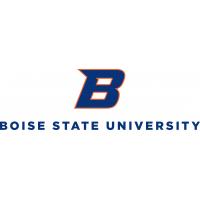The Southwestern North America megadrought is an extreme climate event. Artemisia tridentata (big sagebrush) is the dominant, keystone species of sagebrush- steppe ecosystems in arid and semi-arid habitats of western North America. I conducted a genotype-by-environment (GxE) experiment on two putative genotypes (drought-tolerant, G1 and drought-sensitive, G2) and two cytotypes, diploid (2x) and tetraploid (4x), to determine the phenotypic responses of big sagebrush seedlings to drought. For three chlorophyll fluorescence parameters, my results indicate a complex set of factors influence sagebrush responses to drought, including canalization, adaptive phenotypic plasticity, cryptic genetic diversity, and GxE interactions. Variation in leaf temperature profiles of sagebrush seedlings is exclusively driven by treatment effects, suggesting that variation for this trait is determined by non-adaptive phenotypic plasticity. I did not detect significant treatment effects for root to shoot (R:S) length ratios for 2x and 4x families exposed to drought, although I did detect significant differences among G1 and G2 genotypes of both cytotypes. Tetraploid seedlings significantly outperformed 2x seedlings for R:S length ratios across all three watering treatments. My results indicate that sagebrush populations differ in their capacity to respond to megadrought; thus, proper sourcing of seeds for restoration efforts should account for the genotypes and cytotypes of populations.
Data and Resources
| Field | Value |
|---|---|
| Modified | 2022-07-07 |
| Release Date | 2022-07-07 |
| Publisher | |
| Identifier | 57781c74-bc4a-480c-969c-2c0ae53b5edd |
| License | Adhere to third-party data sharing license |
| Public Access Level | Public |

